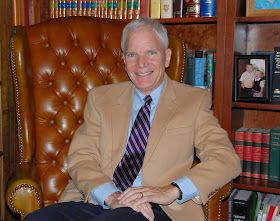Medicine and mystery novels have much in common and this pandemic has highlighted one commonality in a very tragic way.
Many doctors I know are mystery readers. Many mystery writers the world knows are doctors, from Arthur Conan Doyle to Josephine Bell, Daniel Kalla and Tess Gerritsen.
Readers of mysteries are often greeted with a person facing a serious situation, or a tragedy, often from the first page or shortly thereafter. The rest of the book is all about unraveling the complexities of this story – the pain, the fears and, often with many clues – finally finding out whodunnit.
In medicine a person comes carrying a serious story and through listening to the story, unraveling the complexities of their story, their pains, their fears, we often add some tests and hopefully lift the burden of their story with a treatment once we’ve identified the disease or - in mystery terms - whodunnit.
The focus on the story, the complexities of people and the determination to find whodunnit: this is what mystery readers (and writers) and doctors share.
There’s something else they have in common: a sense of moral beliefs and justice being satisfied – as much as they can be – is part of this commonality.
Physicians go into medicine to help people – to deliver just and fair care to patients. Oddly, one can look on medicine as a means (within limits of science) to rectify the wrongs of disease. It is an attempt to give back the patient the best life they can have for as long as they can have it.
Readers approach mystery novels with a sense of righting wrongs and a sense of of justice delivered.
Imagine a mystery book where everyone throws up their hands and claims that they will never find a murderer because they don’t care or can’t be bothered. Where not even a smidgen of justice is served and the smirking murderer goes free. Now, of course this may make an interesting plot but, let’s face it, it’s not the normal fare served by a mystery novel. In fact, I would argue, that seeing evil get their comeuppance is part of the satisfaction of reading a good mystery. Yes, we must often tolerate suffering of the innocent but suffering of the many innocents while detectives shrug their shoulders is certainly not the norm and would leave readers disappointed.
Now, imagine being a doctor during the pandemic. At first, physicians were swamped with patents they could not help because COVID-19 was a new disease. Not only did we lack vaccines and treatments, but we were woefully short of the knowledge and supplies to use masks. Then, vaccines came in, and when one waned, we had more vaccines and the promise (now fulfilled) of better vaccines. We had good quality research to show that masks work to prevent infection and even ample supplies of good masks, not just to protect healthcare workers but also the public. We now have rapid antigen tests - although they aren’t perfect, they give an indication of who is infected, allowing them to isolate and prevent further infections.
All of this good stuff should make being a doctor better than it was at the beginning of the pandemic. So, why are many doctors burning out, quitting their jobs or suffering from various mental health problems, including depression?
Part of it stems from the behaviour of the public. Many are eschewing updating their vaccines – or refusing vaccines altogether – and refusing to wear masks. If they get infected and hospitalized – there are some treatments. However, putting a COVID19 patient in a hospital bed may mean that a cancer patient doesn’t get their surgery or a patent in pain doesn’t get a hip replacement. The doctors caring for cancer patients who can’t get a hospital bed, can’t offer them optimal treatment and watch the unnecessary deterioration of their patients. As we add more patients with COVID19 and LongCovid, and lose doctors, physicians at times cannot get their patients access to the help they need for specialist care. Some physicians have been subjected to abuse – verbal and physical – from increasingly frustrated patients.
The Canadian Medical Association has identified moral injury as a serious and growing problem during the pandemic:
“In the context of health care, when physicians are unable to uphold the oath they took to deliver the best care and put the needs of their patients first, they can experience moral injury. Moral injury is not considered a mental illness; however, those who experience moral injuries often develop negative thoughts about themselves and others, and these symptoms can lead to the development of mental health conditions.”
Moral injury is not a new problem for physicians, but it has increased during this pandemic. A pre-pandemic paper described the dilemma accurately:
“Moral injury describes the challenge of simultaneously knowing what care patients need but being unable to provide it due to constraints that are beyond our control.”
To not be able to properly care for patients is like a lousy ending to a mystery novel – except it’s worse. Much worse. These are real people. With lives, loves and people who love them. To not be able to help a patient because medical science is not up to the task is always sad. However, to not be able to access the care we have and allowing patients to suffer is immoral and unjust.





















